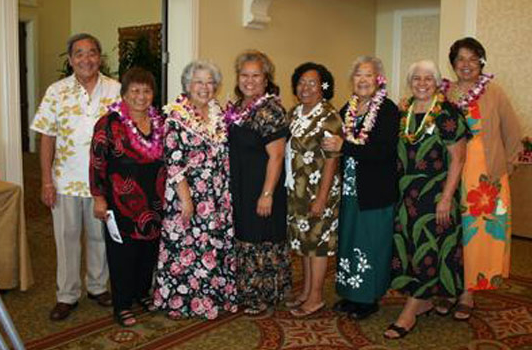
Aloha! Native Hawaiians are those with ancestry to the indigenous people of the Hawaiian Islands. There are 140,652 Native Hawaiians living in the United States, and Southern California is home to 20,571 Native Hawaiians. Over 50% held at least a high school degree, compared to 20% of the U. S. population, and only 2,393 earned a bachelor’s degree or higher and 2,203 Native Hawaiians in California are living below the poverty level (factfinder.census.gov, 2000).
With regards to cancer health disparities, a study of Native Hawaiians in Hawaii found that 64% of Native Hawaiians were obese compared to only 29% in the U.S. population (Curb et al., 1991; Mokuau et al., 1995). Rates of prostate cancer among Native Hawaiians and Samoans rose from 140 to 175 per 100,000 during the 1990s then remained steady through 2006. Rates of uterine cancer among native Hawaiians and Samoans spiked from 30 to 90 per 100,000 in the 1990s then dropped to 60 in 2001-2006 (L. A. Cancer Surveillance Program, 2009). According to Miller et al. (2008) Native Hawaiians in the U.S. had a breast cancer incidence of 175.8 per 100,000, which was significantly higher than that found among non-Hispanic Whites (145.2 per 100,000), and mortality of 33.5 per 100,000, compared to 27.8 per 100,000 for non-Hispanic whites (Miller). Nearly 40% of Native Hawaiian breast cancers in the U.S. were detected at the regional or distant stage, and over 50% of cervical cancers were detected at the regional or distant stage (Miller). In Hawai`i, Native Hawaiian women have the highest mortality rates for cancer of the breast (38 per 100,000) compared to the general population (22.5 per 100,000 for breast) (Gotay). Epidemiological information for Pacific Islanders on the continental U.S. mirror Hawai`i; for instance, a study conducted in Orange County found that the odds for breast cancer incidence among Native Hawaiians and other Pacific Islanders was almost 2.3 times that of non-Hispanic whites (Marshall). Later cancer diagnosis stages for Pacific Islanders account for much of the disparities in their survival. According to Marshall and colleagues (2008), Orange County Hawaiians and other Pacific Islanders were over 2.4 times more likely to have later stages of breast cancer diagnosis (6). In a 2006 cervical and breast cancer knowledge and screening study (Tran et al.), of 157 Native Hawaiian women only 46.5% of women in the study were able to accurately describe screening procedures for cervical and breast cancer.
In September of 2013, the Cancer Prevention Institute of California published cancer incidence trends among Native Hawaiians between the years of 1990 and 2008.
Among Native Hawaiian males, the top five diagnosed cancers were prostate, lung, colon/rectum, non-Hodgkin lymphoma (NHL), and stomach cancer. All five types were observed to have decreasing rates over the 19-year period. Despite a 0.4 percent decrease annually, prostate cancer remains the most commonly diagnosed cancer.
Within the Native Hawaiian female population, the top five diagnosed cancers were breast, lung, uterine corpus, colon/rectum and pancreas. Both breast and lung cancer rates were observed to increase during the first half of the 19-year period and a decrease in the latter half. Cancer of the uterine corpus decreased by 2.7 percent annually, while colon/rectum and pancreatic cancer rates remained stable.
Cancer Incidence Rate Percent Change |
||
|---|---|---|
Native Hawaiian |
Male |
Female |
Prostate |
-0.4% |
|
Lung |
-2.3% |
-6.4%1 |
Colon/rectum |
-0.9% |
No change |
NHL |
-1.0% |
|
Stomach |
-3.8% |
|
Breast |
-4.1%2 |
|
Uterine corpus |
-2.7% |
|
Pancreas |
No change |
|
1since 2002 |
||
Contact: Jane Ka`ala Pang, RN, BSN, PHN, Program Manager
Pacific Islander Health Partnership
12900 Garden Grove Blvd., #214-A
Garden Grove, CA 92843
Tel: (714) 968-1785
Email: kaalasplace@yahoo.com
Download Adobe Acrobat Reader Adobe Reader | Download Word viewer, or download Excel viewer, or download PowerPoint viewer Microsoft Viewers